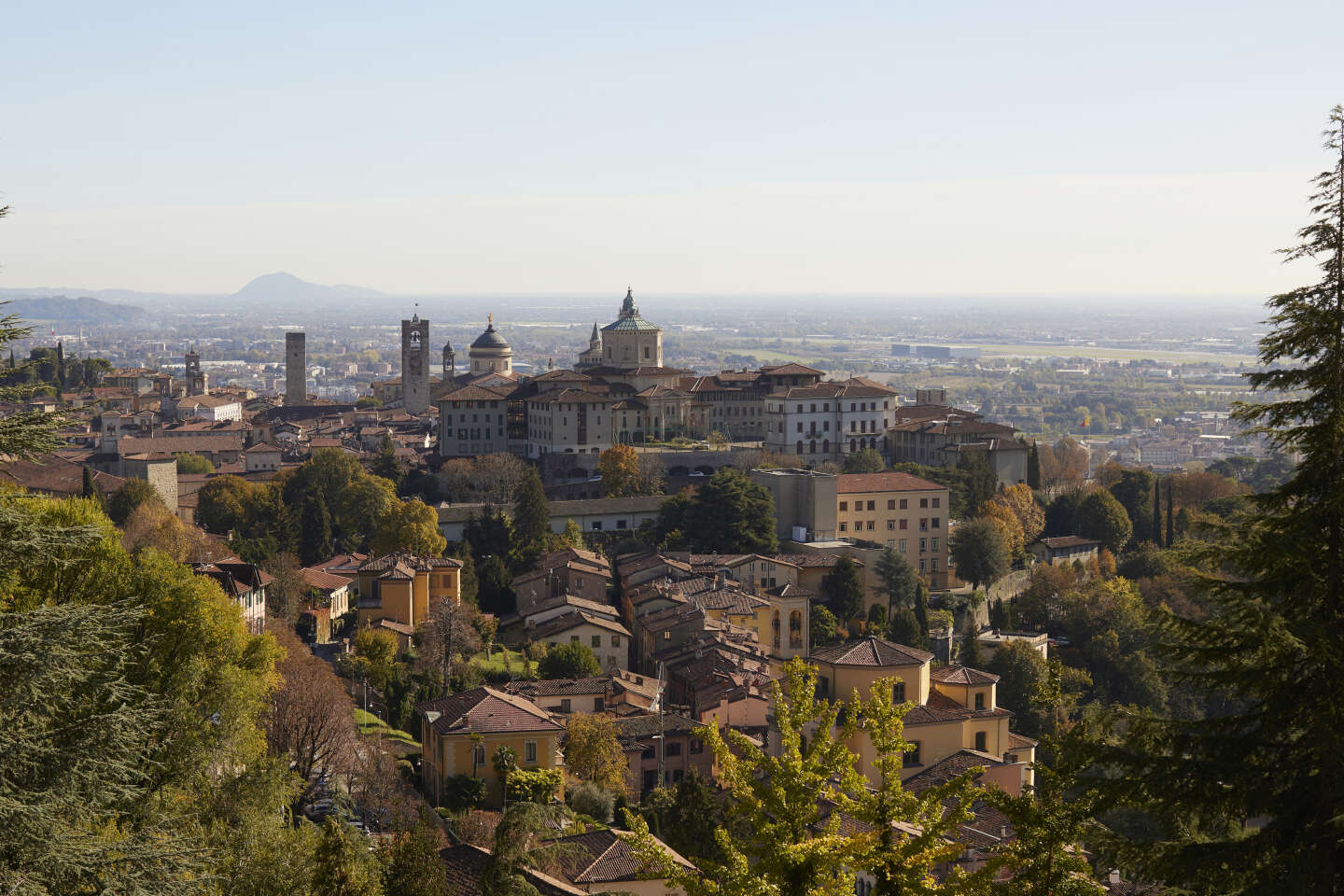


Three years after the Covid-19 pandemic that ravaged the province of Bergamo in 2020 (around 6,000 deaths in March 2020), the city of 116,000 inhabitants designated European Capital of Culture in 2023, along with neighboring Brescia, has never welcomed so many visitors. Bergamo charms with the monumental history of its 'Citta Alta (upper town)' and the relaxed atmosphere of its 'Citta Bassa (lower town).'
Day 1
8 am, the architect's center
After a cappuccino under the arcades of the elegant Café Balzer, and before climbing towards the Renaissance heritage, Bergamo's discovery begins with another work of great architecture, the Centro Piacentiniano (1), named after Marcello Piacentini (1881-1960), Mussolini's favorite architect. He designed EUR in Rome, the district symbolizing Fascist aesthetics. Between 1907 and 1924, he conceived the new center, including the Justice Palace, the Bank of Italy, the Chamber of Commerce, the Post Office with its clock tower as well as Piazza Dante, enclosed by the arcades of the Sentileone, and the promenade. The neoclassical ensemble, imbued with rationalism, lends an old-fashioned charm to this setting, where everyone crosses paths at different times of the day.
9:30 am, the condottiere is a jerk
To get to the upper town, the little funicular is too crowded a ride. You might as well climb by foot towardstwo adjoining, compact squares where architectural styles jostle for position. In Piazza del Duomo (2), the cathedral is a Baroque profusion of marble and color, frescoed by Francesco Coghetti, a local. Right next to it, the Basilica of Santa Maria Maggiore houses a magnificent 16th-century marquetry ensemble: eighty panels designed by Lorenzo Lotto (1480-1556), the Venetian painter, and carved by Giovan Capoferri, prodigiously meticulous in depicting the creation of the universe.
Right next to the basilica, a Renaissance confection of polychrome marble, the Colleoni Chapel bears the name of a condottiere (Italian military captain) who became wealthy thanks to his army of mercenaries serving, in turn, the enemies of Venice and Milan. Around 1470, he desired this church-mausoleum for his marble sarcophagus and gilded equestrian statue. Very proud of his patronymic ("Coglione" means both testicles and jerk), the bribe-taker placed three pairs of testicles on his coat of arms. The one adorning the entrance gate is polished by the hands that touch it in the hope of good fortune.
Opposite, in the arched Palazzo della Ragione (Palace of Reason for government and then justice), fragments of Bramante's frescoes dialogue beautifully with highly contemporary works commissioned by Lorenzo Giusti, who runs the excellent Galleria d'Arte Moderna e Contemporanea di Bergamo. Behind it, the Piazza Vecchia is a concentrate of Italy, with the Torre Civica (whose bell announced the closing of the city gates), the Palazzo del Podesta housing the Museo del Cinquecento (15th century), the marble fountain of the Contatini family and the façade of the Palazzo Nuovo, now a library.
You have 60% of this article left to read. The rest is for subscribers only.
